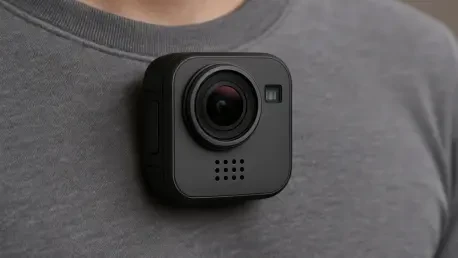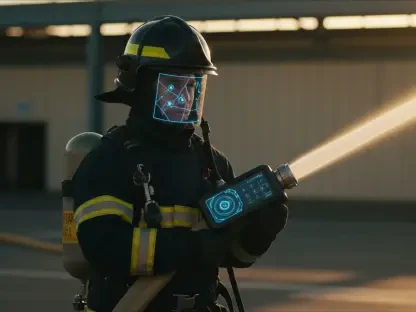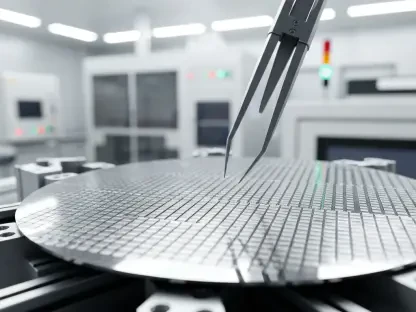Today, we’re thrilled to sit down with Oscar Vail, a technology expert with a deep passion for cutting-edge innovations in consumer electronics. With his extensive background in emerging fields like quantum computing, robotics, and open-source projects, Oscar has his finger on the pulse of the latest advancements. In this interview, we dive into the exciting world of action cameras, focusing on a groundbreaking new release—the ultra-compact, wearable Osmo Nano. We’ll explore what inspired its creation, the unique design choices behind its two-part structure, the impressive tech specs that set it apart, and how its features cater to both casual users and content creators. Join us as Oscar unpacks the innovation and vision driving this tiny yet powerful device.
What sparked the idea to develop such a compact, wearable action camera like the Osmo Nano?
The inspiration behind the Osmo Nano came from a growing demand for versatile, lightweight cameras that could keep up with dynamic lifestyles. We noticed a gap in the market for a device that was small enough to mount anywhere—whether on a hat, chest, or car—yet still delivered professional-grade performance. People wanted something unobtrusive that wouldn’t weigh them down during adventures or everyday activities. The goal was to create a camera that felt like an extension of the user, blending seamlessly into their world while capturing every moment with stunning clarity.
How does the Osmo Nano differentiate itself from other action cameras in your lineup?
The Osmo Nano stands out primarily due to its size and wearability. At just 52 grams for the camera body, it’s incredibly light compared to many of our previous models, which often prioritized bulkier builds for added features. We’ve also focused on a modular approach with the detachable Multifunctional Vision Dock, giving users flexibility in how they use and control the camera. This, combined with advanced features like 4K recording and cutting-edge stabilization, makes it a unique blend of portability and power that’s hard to find elsewhere in our catalog.
Can you walk us through the decision to design the Osmo Nano as a two-part system with the camera body and the Multifunctional Vision Dock?
Splitting the design into two parts—the main camera and the dock—was a strategic choice to balance functionality and compactness. By separating the display and additional electronics into the dock, we kept the camera itself incredibly small and lightweight, ideal for mounting in tight or unconventional spots. The dock, meanwhile, enhances the user experience with a touchscreen for monitoring and control, without adding unnecessary bulk to the camera. It also allows for wireless operation when separated, giving users more creative freedom in how they capture footage.
With the camera at 52 grams and the dock at 72 grams, how does this lightweight design enhance the user experience?
The lightweight design is a game-changer for comfort and versatility. At just 52 grams, the camera can be worn or mounted for hours without feeling like a burden, whether it’s clipped to a hat or strapped to a chest. The dock, at 72 grams, is still easy to handle or carry separately. This means users can focus on their activities—be it hiking, biking, or just exploring—without being distracted by heavy gear. It’s all about making the technology disappear into the background so the user can stay immersed in the moment.
Since the dock isn’t fully waterproof like the camera, how do you envision users managing this in wet or outdoor environments?
We recognize that the dock’s IPX4 rating, compared to the camera’s 10-meter waterproof capability, presents a limitation in certain conditions. Our vision is that users will keep the dock protected or detached in wet scenarios, relying on the camera alone for underwater or rainy shots. The wireless control option helps here, as you can stow the dock safely in a dry bag or pocket while still operating the camera. For extreme conditions, we also encourage using protective accessories to shield the dock if it’s needed nearby. It’s about adapting to the environment with the modular design in mind.
Let’s talk tech specs. How does the 1/1.3-inch CMOS sensor with 13.5 stops of dynamic range elevate the Osmo Nano’s image quality?
The 1/1.3-inch CMOS sensor is a significant upgrade for a camera of this size, offering exceptional detail and clarity. With 13.5 stops of dynamic range, it captures a wider spectrum of light and shadow, meaning you get vibrant highlights and deep shadows without losing detail in either. Compared to smaller sensors in other compact cameras, this allows for richer, more cinematic footage, even in challenging lighting conditions like bright sunlight or dim interiors. It’s a feature that punches way above the camera’s weight class.
What kind of creative possibilities open up with recording options like 4K at 60fps or slow-motion at 120fps?
Recording in 4K at 60fps gives users incredibly smooth, high-resolution footage that’s perfect for everything from vlogs to action-packed sequences. It’s ideal for scenarios where you want every detail crisp, even during fast movement. The 120fps slow-motion mode, on the other hand, unlocks a whole new level of drama and storytelling. It lets users slow down intense moments—like a bike jump or a wave crashing—creating visually stunning effects that draw viewers in. These options empower creators to experiment with pacing and perspective in ways smaller cameras often can’t match.
How do the 10-bit and D-Log M recording modes benefit users during post-production?
The 10-bit recording and D-Log M modes are a dream for anyone serious about editing. 10-bit provides a much broader range of color data compared to standard 8-bit, which means smoother gradients and less banding when adjusting colors or brightness in post. D-Log M, specifically, is a flat color profile that preserves detail in highlights and shadows, giving editors more flexibility to grade footage for a cinematic look. Whether you’re tweaking contrast or matching clips from different shoots, these features ensure the final product looks polished and professional.
Can you explain how the RockSteady 3.0 and HorizonBalancing stabilization systems enhance footage for active users?
Both RockSteady 3.0 and HorizonBalancing are designed to keep footage smooth and level, even during the most chaotic activities. RockSteady 3.0 excels at eliminating shakes and vibrations, so whether you’re running, biking, or filming on a bumpy trail, the video stays stable and watchable. HorizonBalancing goes a step further by keeping the horizon line straight, no matter how much the camera tilts. This is perfect for capturing wide, scenic shots during dynamic movement, ensuring the footage looks natural and professional without distracting tilts or jitters.
Are there specific situations where one stabilization mode might be more effective than the other?
Absolutely, each mode shines in different contexts. RockSteady 3.0 is your go-to for high-intensity, erratic motion—like filming while skateboarding or during a rough off-road ride—because it prioritizes eliminating all those small, rapid shakes. HorizonBalancing, however, is better suited for scenarios where you’re moving but still want a composed, level shot, such as hiking with sweeping landscape views or panning while walking. It’s about picking the mode that matches the vibe and movement of your activity to get the best-looking result.
What is your forecast for the future of compact action cameras like the Osmo Nano in the evolving world of content creation?
I think compact action cameras like the Osmo Nano are only going to become more integral to content creation as the demand for portable, high-quality gear grows. We’re likely to see even smaller form factors without sacrificing performance, thanks to advancements in sensor tech and battery efficiency. I also foresee greater integration with smart ecosystems—think seamless syncing with phones or cloud platforms for instant editing and sharing. As creators continue to push boundaries with immersive, on-the-go content, cameras like these will evolve to offer more AI-driven features, like automated framing or scene recognition, making professional results accessible to everyone.









